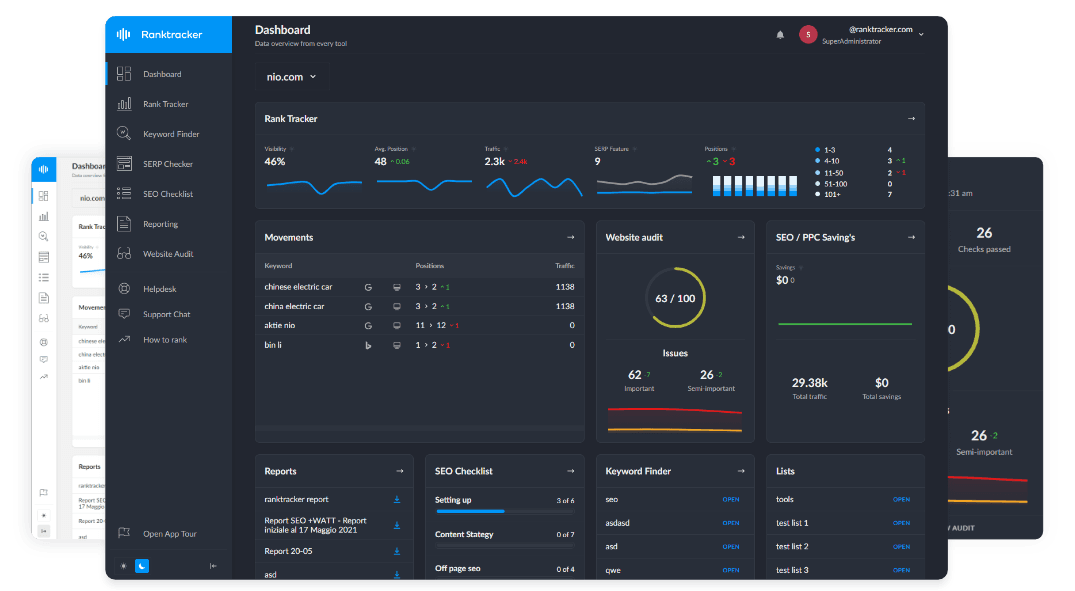Intro
Technology is advancing rapidly. Many businesses face challenges in keeping pace with IT systems that seem outdated and overly complicated. Managing infrastructure can be frustrating, especially when it feels improvised and unreliable.
Here’s some encouraging news: solutions are improving. Cloud computing is expanding quickly, and smarter tools like AI are transforming how we address significant challenges. This blog will help you explore key trends in IT and offer practical strategies for updating your infrastructure. Prepared to discover what’s ahead?
Key Trends Shaping the Future of IT
Businesses face rapid changes as technology becomes more advanced. IT professionals must adjust swiftly or risk losing ground to competitors.
Adoption of cloud-based solutions
Cloud-based solutions simplify IT infrastructure for business owners. They remove the requirement for expensive physical servers and offer adaptability to increase or decrease resources as necessary. Companies can store data securely, access it from anywhere, and lower downtime risks with these services.
"'Switching to the cloud allows businesses to concentrate on growth rather than hardware,' experts often say." Cloud computing also enhances collaboration by allowing employees to work on shared files simultaneously. Services like Microsoft Azure or Amazon Web Services have made this shift available even for smaller companies.
Integration of artificial intelligence and machine learning
Artificial intelligence and machine learning reshape IT infrastructure. These tools analyze vast amounts of data in seconds. Businesses employ them to foresee trends, automate tasks, and enhance decision-making. For instance, AI-powered chatbots manage customer service 24/7, potentially reducing customer service costs by up to 30%. Machine learning improves operations by identifying patterns that human eyes might overlook.
Smart algorithms drive advanced cybersecurity solutions. They detect threats faster than traditional systems can respond. Predictive maintenance also gains benefits from AI technology in asset-heavy industries like manufacturing or logistics. This approach minimizes costs by avoiding equipment failures before they occur. Investing in these technologies strengthens business operations while staying ahead of competitors.
Emphasis on cybersecurity and data privacy
Cybercriminals grow smarter every day, making data privacy crucial for every business. Protect sensitive company and customer information with effective cybersecurity measures. Cyberattacks can cripple operations, drain finances, and tarnish reputations, according to Scott Greene, CEO of NetGreene. Invest in threat detection systems to quickly identify breaches.
Encrypt stored and transmitted data to keep it safe from prying eyes. Regularly update software to block vulnerabilities hackers exploit. Train employees on spotting phishing emails or other scams targeting your company. Building trust by showing clients their data is a priority—a positive outcome for security and business growth.
- Strategies for Smarter IT Infrastructure
Strategies for Smarter IT Infrastructure
Strong IT infrastructure starts with adaptable systems. Smart strategies help businesses tackle challenges without breaking a sweat.
Building scalable and flexible systems
Designing systems that allow for growth without disruptions is crucial. Businesses must adopt modular IT infrastructure, enabling them to expand or reduce operations as needed. Cloud-based solutions provide adaptability by enabling quick resource allocation and minimizing downtime during shifts in demand. Learn more about scalable IT infrastructure from about Ironclad TEK.
Prioritizing software-defined technologies (SDx) can further simplify management. These tools help businesses adjust their network architecture with ease, removing the need for frequent hardware overhauls. Adaptability today ensures survival tomorrow in an ever-changing market. Focusing on efficiency leads naturally to using automation for operational success.
Leveraging automation for operational efficiency
Building adaptable systems is just one piece of the puzzle. Automation improves operations by removing repetitive tasks and minimizing manual errors. Automated workflows enable businesses to save time and resources while ensuring accuracy. For example, automated network monitoring tools can identify issues instantly, preventing costly downtime.
The All-in-One Platform for Effective SEO
Behind every successful business is a strong SEO campaign. But with countless optimization tools and techniques out there to choose from, it can be hard to know where to start. Well, fear no more, cause I've got just the thing to help. Presenting the Ranktracker all-in-one platform for effective SEO
We have finally opened registration to Ranktracker absolutely free!
Create a free accountOr Sign in using your credentials
IT infrastructure modernization gains significant advantages when automation takes over routine management. Tasks like patch installations, software updates, or data backups are handled efficiently with minimal human involvement. This method allows your team to focus on more critical projects that contribute to meaningful growth.
The Role of Emerging Technologies
Technology continues to break barriers, presenting quicker and more intelligent solutions. Businesses must remain alert to adopt these advancements effectively.
Advancements in edge computing
Edge computing processes data closer to its source, reducing latency and speeding up operations. By minimizing the distance data travels, businesses can respond faster to customer demands and system changes. Companies using edge computing reduce operational costs significantly, with potential savings reaching up to 25%, by limiting reliance on centralized cloud servers. It supports real-time analytics, perfect for industries like healthcare or manufacturing needing quick decisions.
The potential of quantum computing
Quantum computing offers new opportunities to address problems that traditional computers find challenging. This is made possible through advanced quantum computing software that harnesses quantum mechanics to solve complex computations more efficiently. It processes data at speeds far beyond standard systems, enabling tasks like optimization and encryption to be completed more quickly. For businesses handling intricate infrastructures or operational changes, this can lead to faster solutions to logistical hurdles or secure management of data.
Many industries are already exploring its possibilities. IT infrastructure updates could see significant improvements with quantum algorithms enhancing network architecture efficiency. Cloud-based solutions may also become more robust by incorporating these advanced processing capabilities. Although still in its early stages, experts anticipate it could significantly influence business operations over the next decade—making it crucial to stay informed.
Conclusion
The future of IT requires decisive actions and smarter thinking. Businesses must adjust to rapid technology changes or risk lagging. From AI to cloud systems, opportunities are vast but intricate. Staying ahead means approaching change with intention and diligence. The proper infrastructure today determines success in the future.

